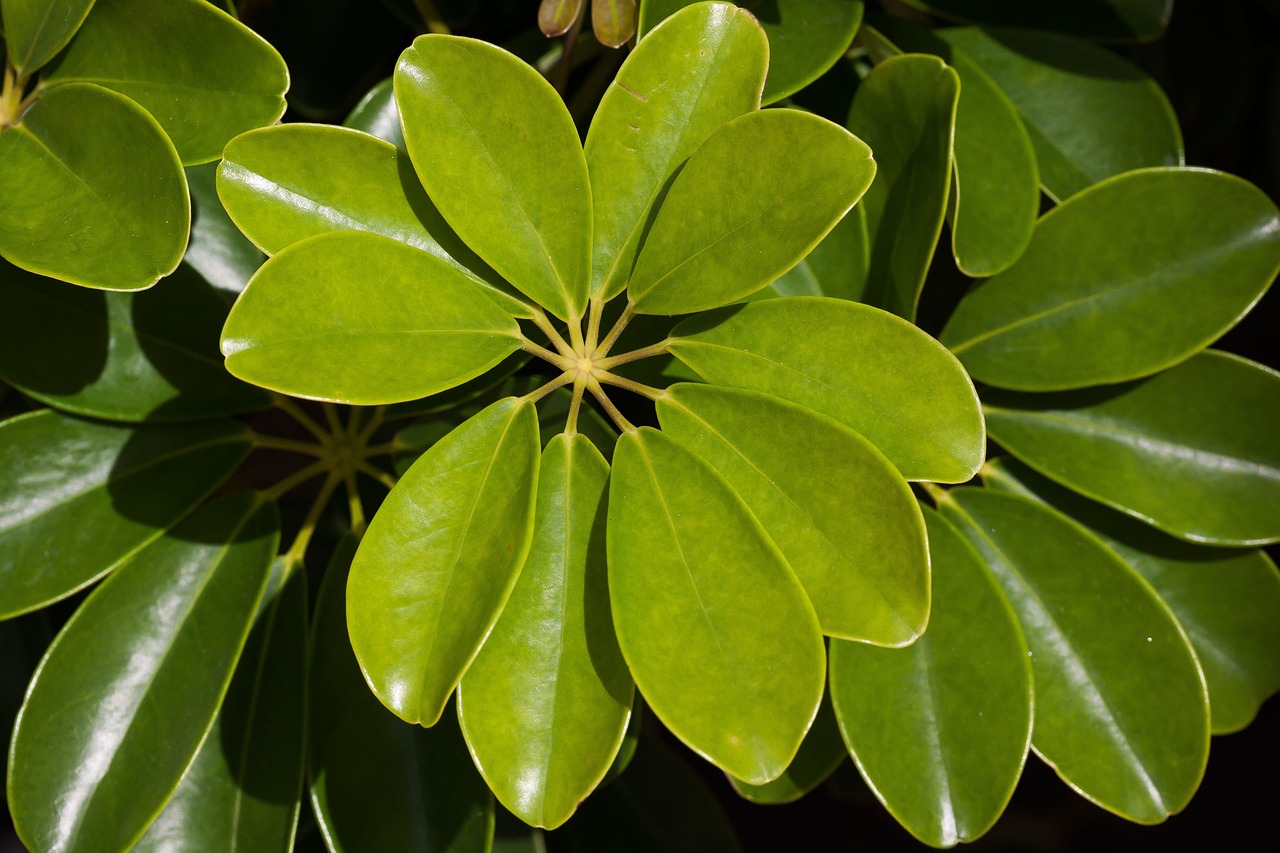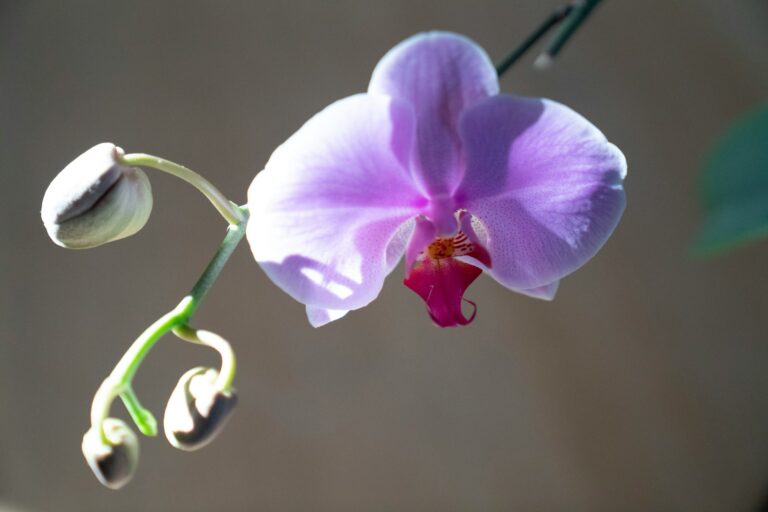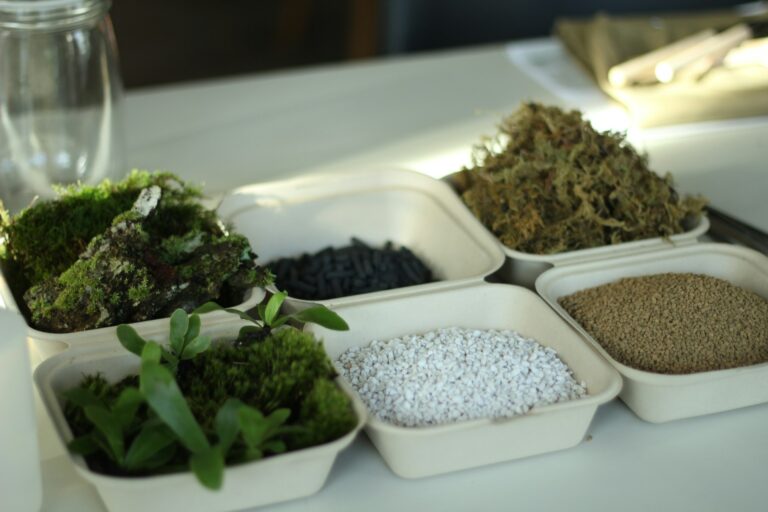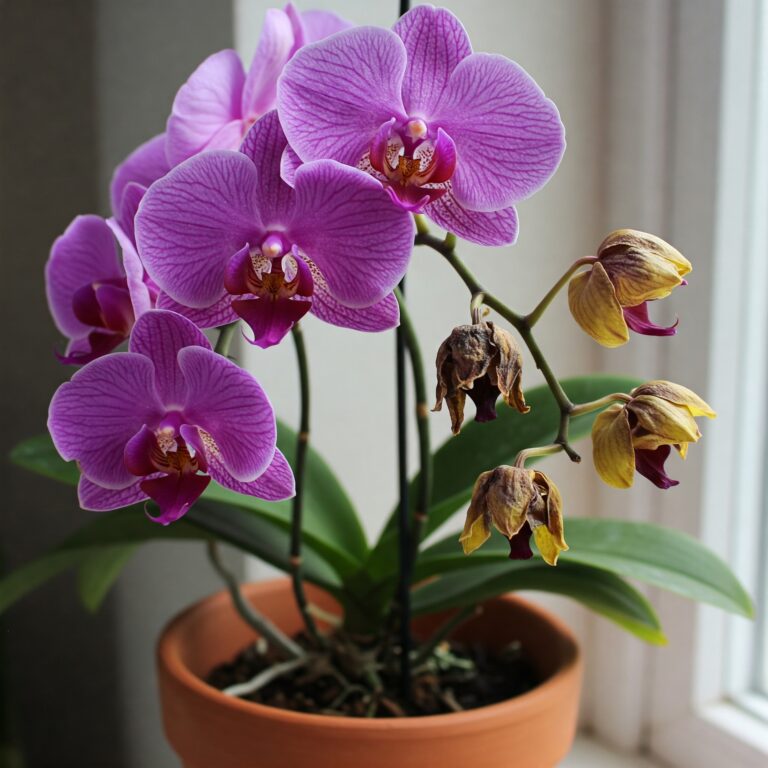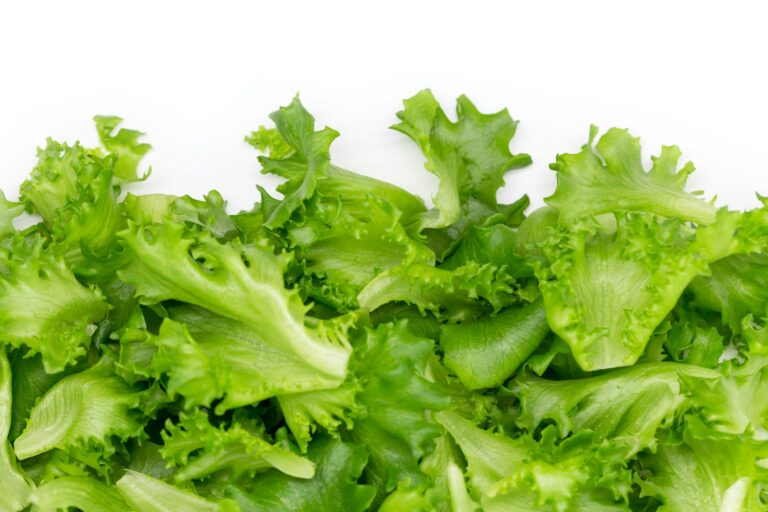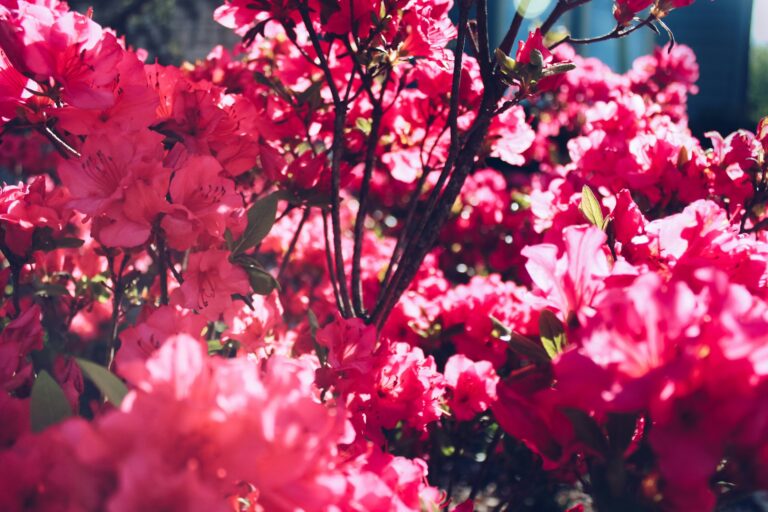You must understand what happens to your plant when the leaves start falling off. The umbrella plant is known for its foliage and graceful appearance that can delight your indoor space.
That appearance can change easily when your umbrella plant drops leaves. So, why is your umbrella plant dropping leaves?
When the plant starts to lose its leaves, it’s a sign of stress due to improper care and maintenance. For instance, overwatering and underwatering can stress your plant, causing the leaves to drop. Other factors include low light, extreme temperatures, repotting, pests, diseases, poor fertilization, low humidity, and sudden location change.
In this article, we will explore the various factors that could contribute to leaf dropping in umbrella plants and provide insights into how you can address these concerns to ensure the vitality of your beloved plant.
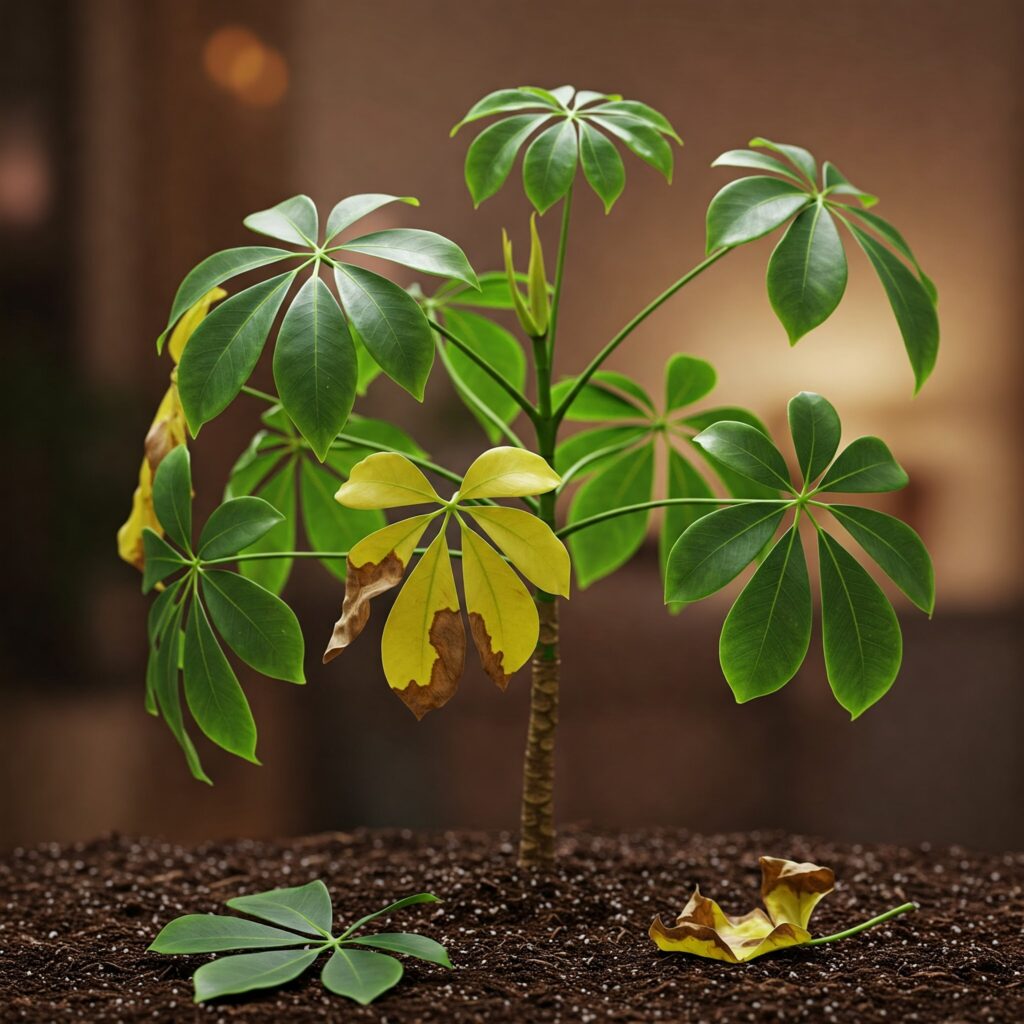
What is an umbrella plant (Schefflera plant)?
The umbrella plant, scientifically known as Schefflera, is a genus of flowering plants in the family Araliaceae. It encompasses several species, but the most commonly cultivated one is Schefflera actinophylla, also known as the octopus or Australian umbrella tree.
The umbrella plant is native to tropical regions in Australia, New Guinea, and the Pacific Islands. It is known for its distinctive appearance, characterized by large, glossy, compound leaves that radiate outward like the spokes of an umbrella, hence its common name.
Schefflera plants are popular indoor and outdoor gardening choices due to their aesthetic appeal and relatively low maintenance requirements. The size of umbrella plants can vary, with some species growing as small shrubs and others reaching heights of up to 30 feet (9 meters). They can be grown as houseplants, garden accents, or bonsai specimens.
Reasons for umbrella plant dropping leaves.
Here are the significant reasons that are causing your umbrella plant to drop leaves.
Improper watering.
Improper watering can significantly impact the health of an umbrella plant and can be a common cause of leaf dropping. Overwatering or underwatering can lead to stress and subsequent leaf loss in umbrella plants.
When an umbrella plant is overwatered, the roots can become waterlogged, leading to poor oxygen circulation and root rot. As a result, the plant cannot absorb nutrients efficiently, and the leaves may turn yellow or brown and eventually drop off. Overwatering can also create a favorable environment for fungal growth, further damaging the plant.
On the other hand, underwatering deprives the plant of sufficient moisture, causing the leaves to wilt, turn brown, and drop off. Lack of water affects the plant’s ability to carry out vital processes like photosynthesis and nutrient absorption, leading to stress and leaf shedding.
How to fix.
Firstly, check the soil moisture regularly by sticking your finger about an inch into the soil. If it feels excessively dry, it’s a sign that the plant needs watering. If it feels consistently damp, it indicates overwatering.
Secondly, you can develop a watering schedule based on the plant’s needs and environmental conditions. Allow the top inch or so of the soil to dry out before watering again. Avoid following a rigid watering routine and adjust it according to humidity and temperature.
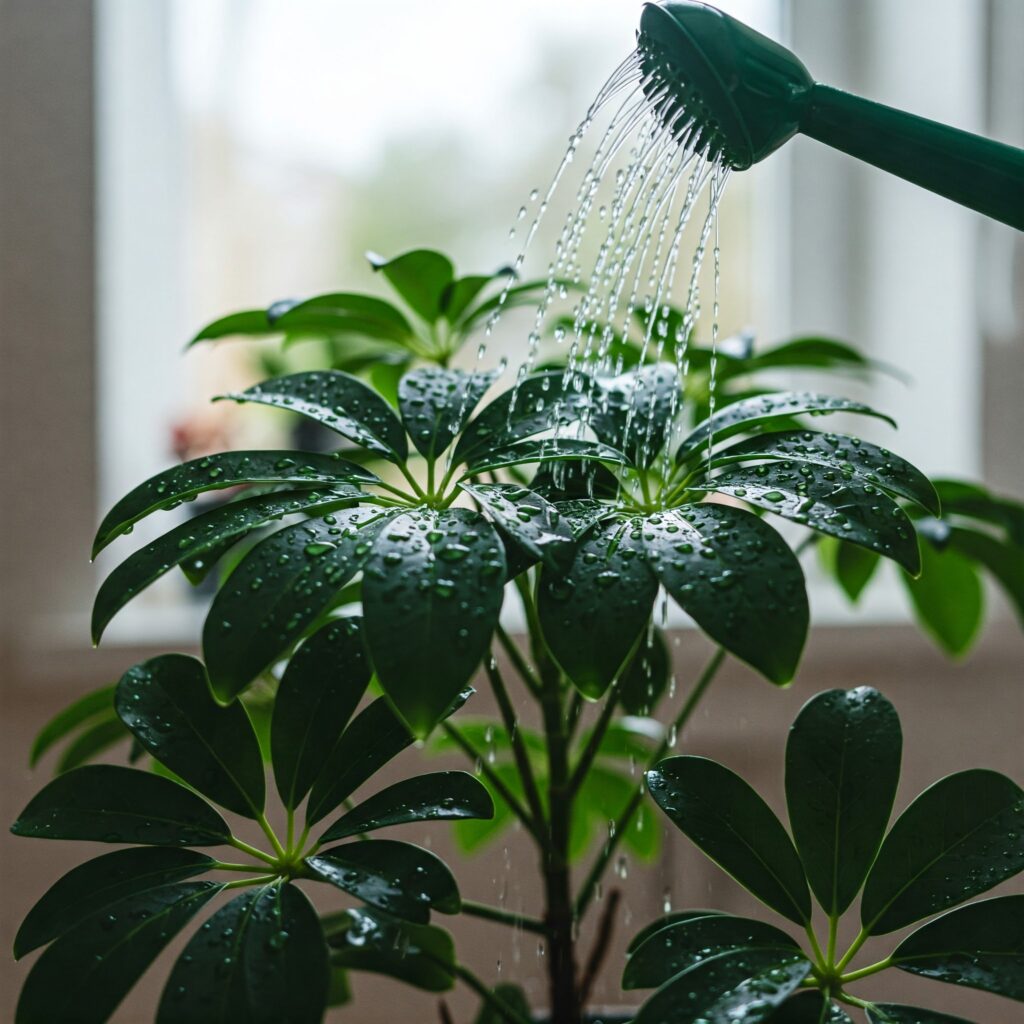
Thirdly, when watering, ensure that the water reaches the root zone and allows excess water to drain out. Avoid leaving the plant in standing water, leading to root rot. Consider using a well-draining potting mix to enhance drainage.
Since umbrella plants thrive in humid environments, you can increase humidity around the plant by misting its leaves regularly or placing a tray of water near the plant. This can help mitigate the effects of underwatering.
Finally, ensure that your umbrella plant receives bright, indirect light to maintain proper moisture levels in the soil. Excessive exposure to direct sunlight can increase water evaporation and potentially lead to underwatering.
Low light conditions.
Low light conditions can contribute to leaf dropping in umbrella plants. Tropical plants require a certain light level for photosynthesis and maintaining their overall health. Insufficient light can lead to various issues that result in leaf drops.
In low-light conditions, umbrella plants struggle to produce enough energy through photosynthesis. As a result, the plant may prioritize survival over leaf maintenance, leading to the shedding of older leaves to conserve energy.
When umbrella plants don’t receive enough light, they may exhibit elongated and weak growth patterns as they stretch toward available light sources. This leggy growth is often accompanied by sparse foliage and a higher likelihood of leaf dropping.
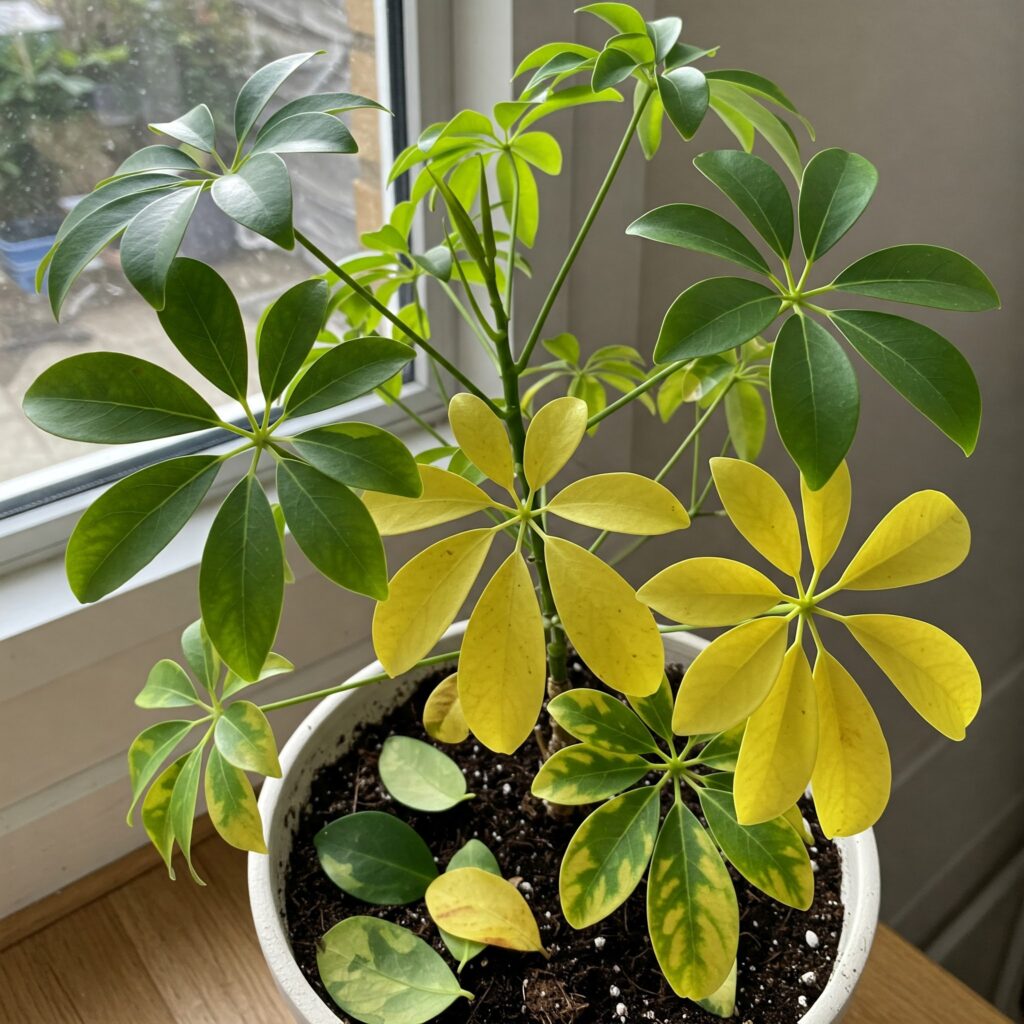
How to fix.
Determine the light levels in the area where your umbrella plant is located. If the light is too dim, consider relocating the plant to a spot with better lighting conditions, such as near a window with filtered or indirect sunlight.
If moving the plant is not feasible, you can supplement natural light with artificial lighting. Use full-spectrum grow lights or fluorescent lights specifically designed for plants. Position the lights close to the plant, ensuring adequate coverage for the foliage.
Rotate it periodically to ensure even light exposure on all sides of the plant. This helps prevent the development of lopsided growth and encourages uniform leaf growth.
If your umbrella plant has already experienced significant leaf dropping due to low light, consider pruning and trimming it. This helps stimulate new growth and encourages the plant to direct its energy towards healthier leaves.
Also, ensure your umbrella plant receives an appropriate duration of light exposure each day. Aim for around 8 to 10 hours of light, but be cautious of excessive exposure to direct sunlight, as it can cause leaf scorching.
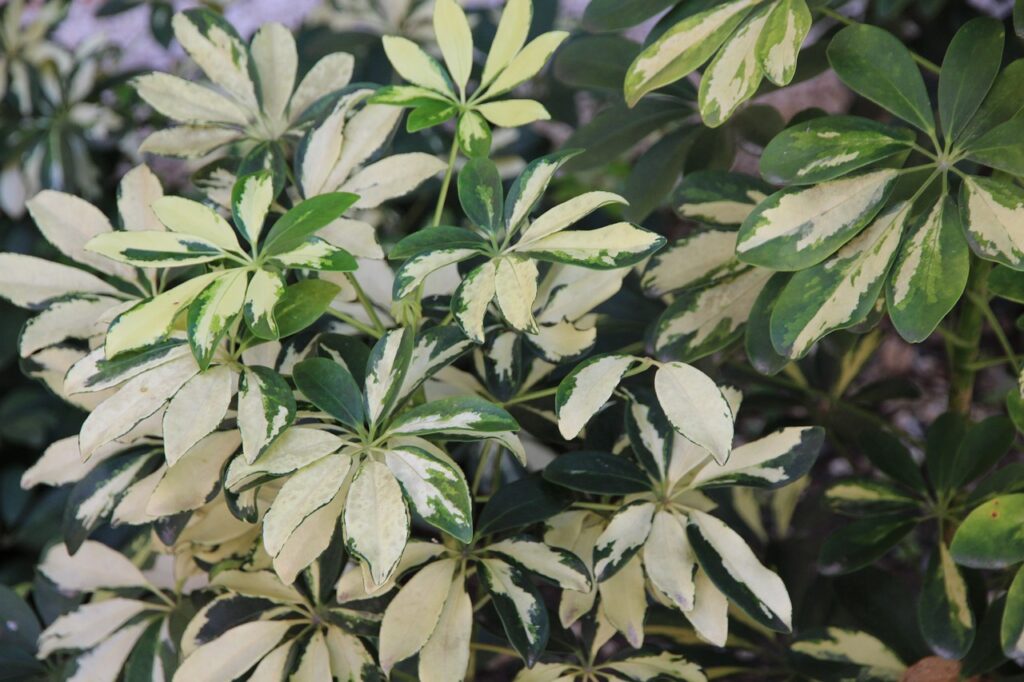
Extreme temperatures.
Extreme temperatures, whether too hot or cold, can adversely affect umbrella plants and contribute to leaf dropping. These plants are sensitive to temperature fluctuations, and when exposed to extreme conditions, they may undergo stress responses that lead to leaf loss. Here’s how extreme temperatures can impact umbrella plants:
When exposed to prolonged periods of high temperatures, umbrella plants may experience excessive transpiration, leading to water loss and dehydration. This can result in leaf wilting and yellowing, eventually leading to leaf drop.
Umbrella plants are susceptible to cold temperatures, especially if they fall below their preferred range. Cold drafts or exposure to freezing temperatures can cause damage to the plant’s cells, leading to browning, blackening, or wilting of leaves.
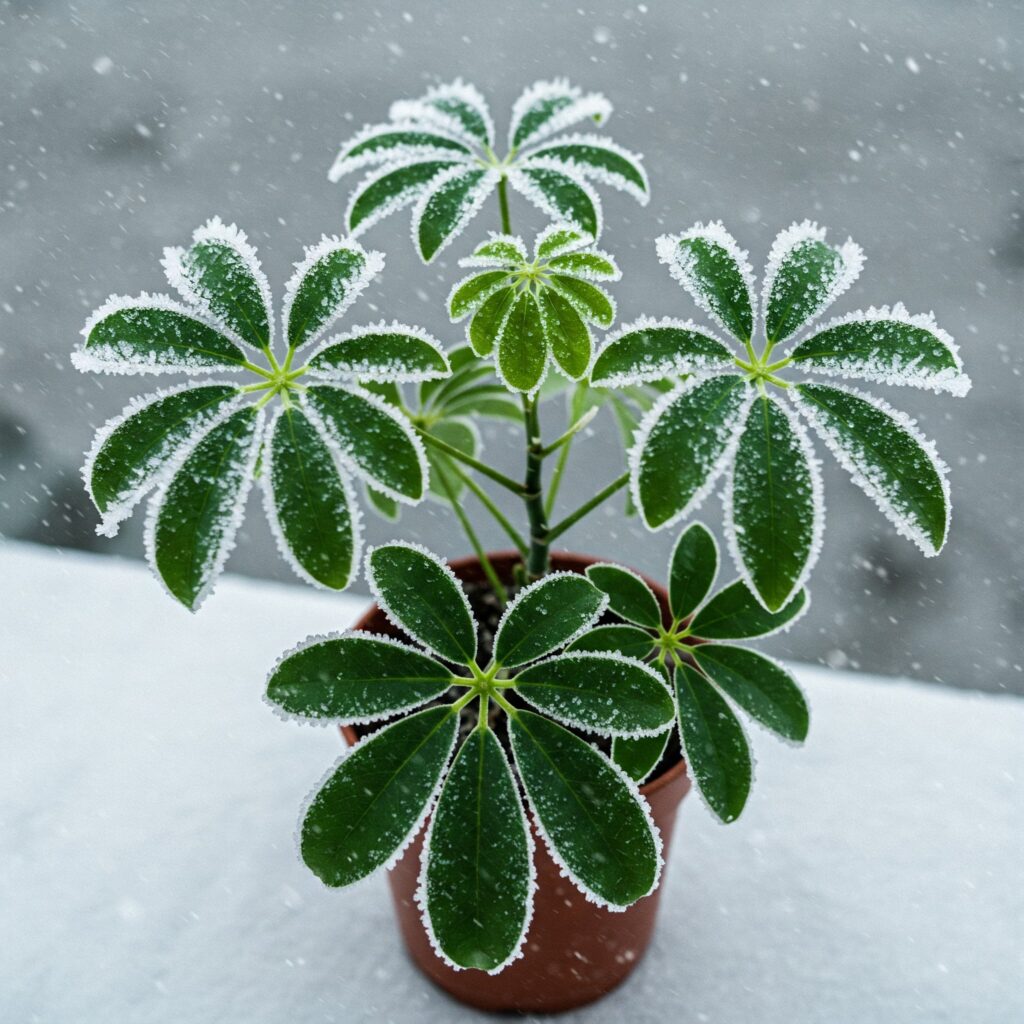
In severe cases, prolonged exposure to extreme cold can cause leaf drop and even damage the plant’s roots.
How to fix.
Maintain the ideal temperature range for your umbrella plant. Generally, umbrella plants prefer temperatures between 60°F to 75°F (15°C to 24°C). Avoid placing them near drafty windows, doors, or heating/cooling vents that may subject them to rapid temperature changes.
During periods of extreme temperatures, provide insulation to protect your umbrella plant. Move it away from cold drafts or place it in a location that offers some protection from direct sunlight during the hot summer months.
Use a thermometer to regularly monitor the temperature of your umbrella plant. This allows you to identify and rectify any temperature extremes promptly.
If your umbrella plant is consistently exposed to extreme temperatures in its current location, consider moving it to a more suitable spot. Choose an area with a stable temperature range and shield it from direct exposure to harsh elements.
Repotting.
Repotting can sometimes lead to leaf dropping in umbrella plants due to the temporary stress and adjustment the plant experiences. Here’s how repotting can affect umbrella plants:
During repotting, the plant’s root system is disturbed as it is removed from its current pot and transplanted into a new one. This disruption can temporarily hinder the plant’s ability to absorb water and nutrients, resulting in leaf wilting and potential leaf drop.
Repotting can cause a period of transplant shock, where the plant adjusts to its new environment, soil, and pot size. This shock can manifest as wilting, yellowing, or leaf dropping as the plant redirects its energy to establish new root growth and adapt to the changes.
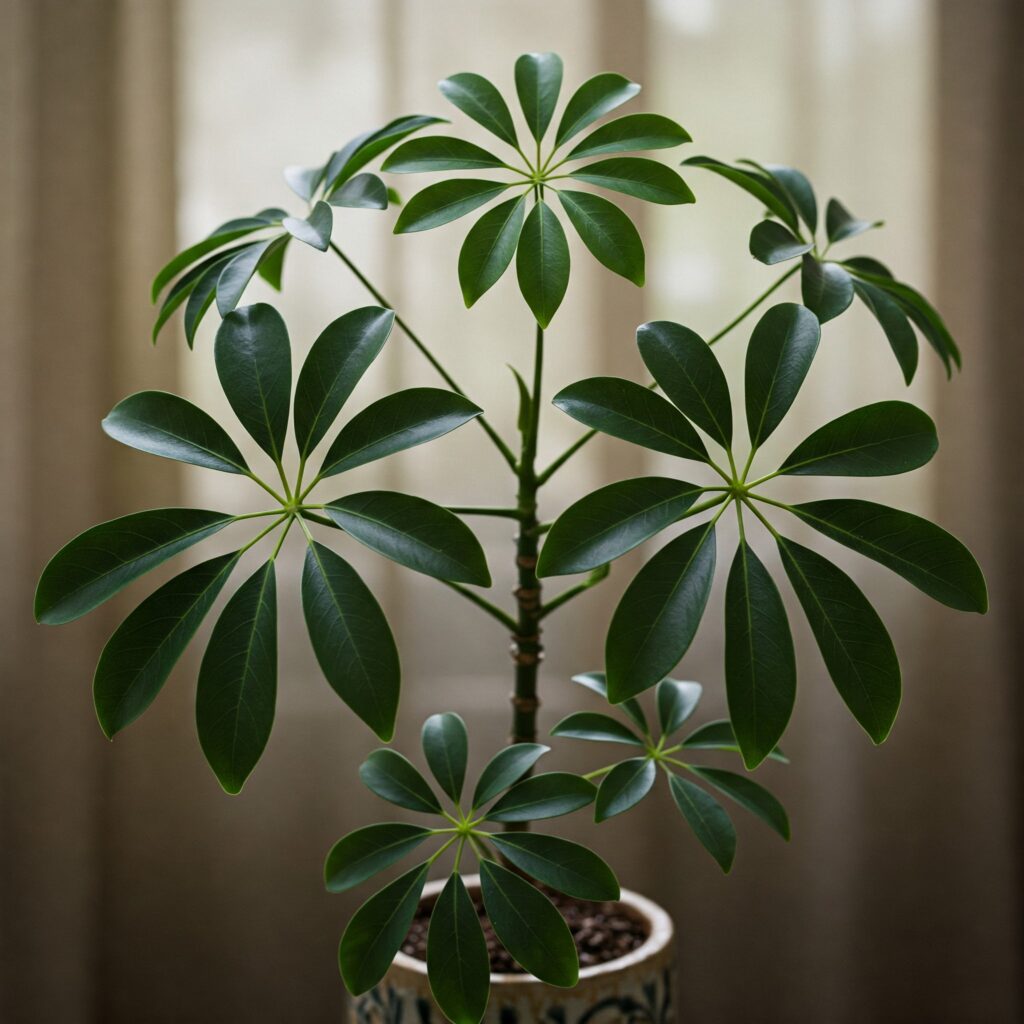
How to fix.
Always plan to repot during the plant’s active growth period, typically in spring or early summer. This allows the umbrella plant to recover more quickly and reduces the chances of leaf drop.
Also, ensure the new pot has proper drainage holes and is slightly larger than the previous one to accommodate the plant’s growth. Use well-draining potting soil formulated for tropical plants. Pre-moisten the soil to help prevent further water stress.
When removing the plant from its old pot, be gentle to minimize root damage. Gently loosen the roots and remove any excess soil, if necessary. Avoid excessive pulling or tearing of the roots.
After repotting, place the plant in an area with indirect light to reduce stress. Avoid direct sunlight for a few days as the plant recovers. Maintain the appropriate watering routine, ensuring the soil is moist but not soggy. Mist the leaves occasionally to increase humidity and reduce water loss through transpiration.
Pests.
Pests can be a common cause of leaf dropping in umbrella plants. Infestations of insects or other pests can damage the plant’s leaves, disrupt its natural processes, and eventually lead to leaf loss.
Pests like aphids, spider mites, scales, and mealybugs can feed on the plant’s foliage, sucking out sap and vital nutrients. This feeding activity weakens the leaves, causing them to yellow, wither, and eventually drop off.
Some pests can carry and transmit diseases to umbrella plants. These diseases can further weaken the plant, leading to leaf discoloration, necrosis, and shedding.
How to fix.
- Identify the specific pest infestation affecting your umbrella plant. Different pests may require different treatment methods. Carefully examine the plant’s leaves, stems, and undersides to spot any signs of pests, such as visible insects, webbing, or small holes.
- If the infestation is minimal, remove the pests from the plant using a soft cloth or cotton swab dipped in soapy water. Gently wipe the affected leaves and stems to remove the pests. Be thorough, targeting both the pests and their eggs.
- Consider using natural pest control methods like neem oil, insecticidal soaps, or diluted alcohol sprays. These solutions can help deter and eliminate pests while being less harmful to the plant and the environment. Follow the instructions and dosage recommendations specific to each product.
- In severe infestations, you may need to resort to systemic insecticides. These are absorbed by the plant and circulate throughout its tissues, providing long-lasting protection against pests. However, exercise caution when using systemic insecticides, as they can harm beneficial insects.
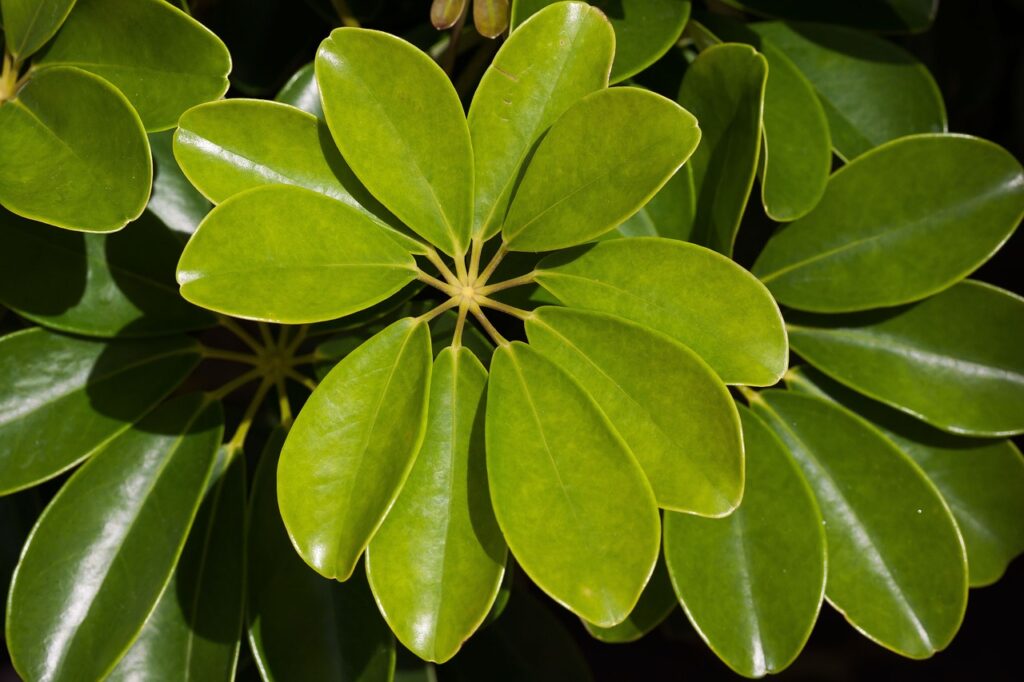
Diseases.
Diseases can contribute to leaf dropping in umbrella plants. Fungal, bacterial, and viral diseases can weaken the plant’s health, disrupt its physiological processes, and lead to leaf loss.
Common fungal diseases like leaf spot, powdery mildew, and root rot can affect umbrella plants. These diseases often manifest as spots, lesions, or fuzzy growth on the leaves and stems. As the disease progresses, the affected leaves may turn yellow, brown, or black and eventually drop off.
Bacterial infections can cause diseases such as bacterial leaf spot and bacterial stem rot in umbrella plants. These diseases typically result in water-soaked spots, rotting tissue, and discoloration. Severe bacterial infections can lead to leaf dropping as the plant’s tissues are affected.
Viral infections can also affect umbrella plants, although they are less common. Viruses can cause symptoms like mottled or distorted leaves, stunted growth, and a general decline in the plant’s health. In severe cases, the affected leaves may drop prematurely.
How to fix.
- Regularly inspect your umbrella plant for signs of disease, such as spots, discoloration, or abnormal growth. If you notice any affected leaves or stems, promptly remove them and dispose of them away from the plant to prevent the spread of disease.
- Ensure proper air circulation around the plant by providing adequate spacing between plants and avoiding overcrowding. Good airflow helps reduce moisture levels and minimizes favorable conditions for disease development.
- Overly moist conditions can promote the growth of fungal and bacterial diseases. Adjust your watering practices to balance moisture and dry out the soil surface. Avoid overwatering, and allow the top layer of soil to dry before watering again.
- In severe or recurring fungal or bacterial diseases, you may need to use appropriate fungicides or bactericides. Choose products specifically formulated for the disease affecting your umbrella plant, and follow the instructions and dosage recommendations carefully.
- Isolate any infected plants to prevent the spread of diseases to other nearby plants. Maintain good hygiene practices, such as cleaning tools and equipment before and after use, and avoid using contaminated soil or plant material.
If you are unsure about the disease affecting your umbrella plant or if the problem persists despite your efforts, consider consulting a plant professional or a local plant clinic for a proper diagnosis and targeted treatment recommendations.
Poor fertilization.
Poor fertilization can contribute to leaf dropping in umbrella plants, leading to nutrient deficiencies or imbalances. When the plant doesn’t receive an adequate supply of essential nutrients, it can affect its overall health and result in leaf loss.
Umbrella plants require a balanced supply of nutrients, including nitrogen (N), phosphorus (P), and potassium (K), along with other micronutrients. Insufficient levels of these nutrients can lead to deficiencies, causing yellowing or discoloration of leaves, stunted growth, and eventually leaf drop.
Excessive or imbalanced fertilization can also cause leaf dropping. When certain nutrients, such as nitrogen, are over-applied, it can result in rapid, weak growth and an imbalance in the overall nutrient uptake. This can lead to weaker leaves that are more prone to dropping.
How to fix.
- Conduct a soil test to determine the nutrient levels and pH of the soil. This helps identify any deficiencies or imbalances affecting the umbrella plant. Soil testing kits or services are available at gardening centers or through agricultural extension offices.
- Select a well-balanced, slow-release fertilizer for indoor or tropical foliage plants. Look for a fertilizer with an NPK ratio suitable for umbrella plants (e.g., 10-10-10 or 20-20-20) and micronutrients. Follow the package instructions for application rates.
- Apply the fertilizer to the soil around the plant according to the recommended dosage and frequency. Avoid applying excessive amounts of fertilizer, as this can lead to nutrient imbalances. Remember to water the plant after fertilization to help the nutrients penetrate the soil.
- Fertilize your umbrella plant during the active growing season, typically from spring through summer. Reduce or halt fertilization during the plant’s dormant period in fall and winter. Follow a consistent fertilization schedule but adjust based on the plant’s response and the specific fertilizer’s recommendations.
- If a soil test reveals specific micronutrient deficiencies, consider supplementing the plant’s fertilization regimen with appropriate micronutrient solutions. These can help address any deficiencies and support healthy leaf growth.
Observe the plant’s response to fertilization over time. If you notice persistent leaf dropping or signs of nutrient deficiencies despite fertilization efforts, consider consulting a plant professional or an agricultural extension office for further guidance.
Low humidity.
Low humidity can significantly impact umbrella plants and lead to leaf dropping. These plants are native to tropical regions and thrive in high-humidity environments. When the humidity levels are too low, it can affect the plant’s ability to retain moisture, resulting in leaf loss.
Low humidity causes increased evaporation from the plant’s leaves, leading to excessive transpiration. This rapid water loss can dehydrate the leaves, causing them to wilt, curl, turn brown, and eventually drop off.
In low-humidity conditions, the surrounding air lacks moisture. As a result, the plant struggles to absorb sufficient moisture from the air through its leaves. This can lead to water stress and leaf dropping as the plant attempts to conserve water.
How to fix.
- Raise the humidity levels around the umbrella plant by employing various methods. Place a humidifier near the plant to add moisture to the air. Alternatively, use a tray filled with water and pebbles placed beneath the plant’s pot. As the water evaporates, it increases humidity around the plant.
- Grouping several plants together can create a microclimate of higher humidity as plants release moisture through transpiration. Clustering umbrella plants with other moisture-loving plants can help maintain a higher humidity level in their immediate vicinity.
- Regularly mist the leaves of the umbrella plant with water using a spray bottle. Mist in the morning to allow the leaves to dry before evening, as dampness can promote fungal growth. Misting increases humidity around the plant and provides moisture to the leaves.
- Place the umbrella plant’s pot on a tray filled with pebbles and water. The water should be below the surface of the pebbles, ensuring that the pot doesn’t sit in standing water. As the water evaporates, it increases humidity around the plant.
- Pay attention to the watering routine of your umbrella plant. Adequate and consistent watering helps prevent water stress in low-humidity conditions. Ensure the soil remains evenly moist but not waterlogged, as excessive moisture can lead to other issues like root rot.
- Position the umbrella plant away from drafts, heating vents, or air conditioning units, as these can contribute to low humidity and dry out the plant more quickly. Maintaining a stable temperature and airflow helps preserve humidity levels.
